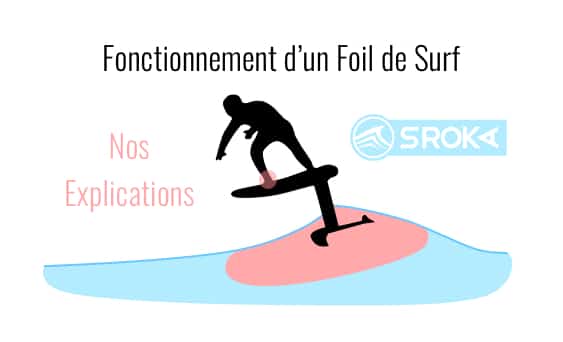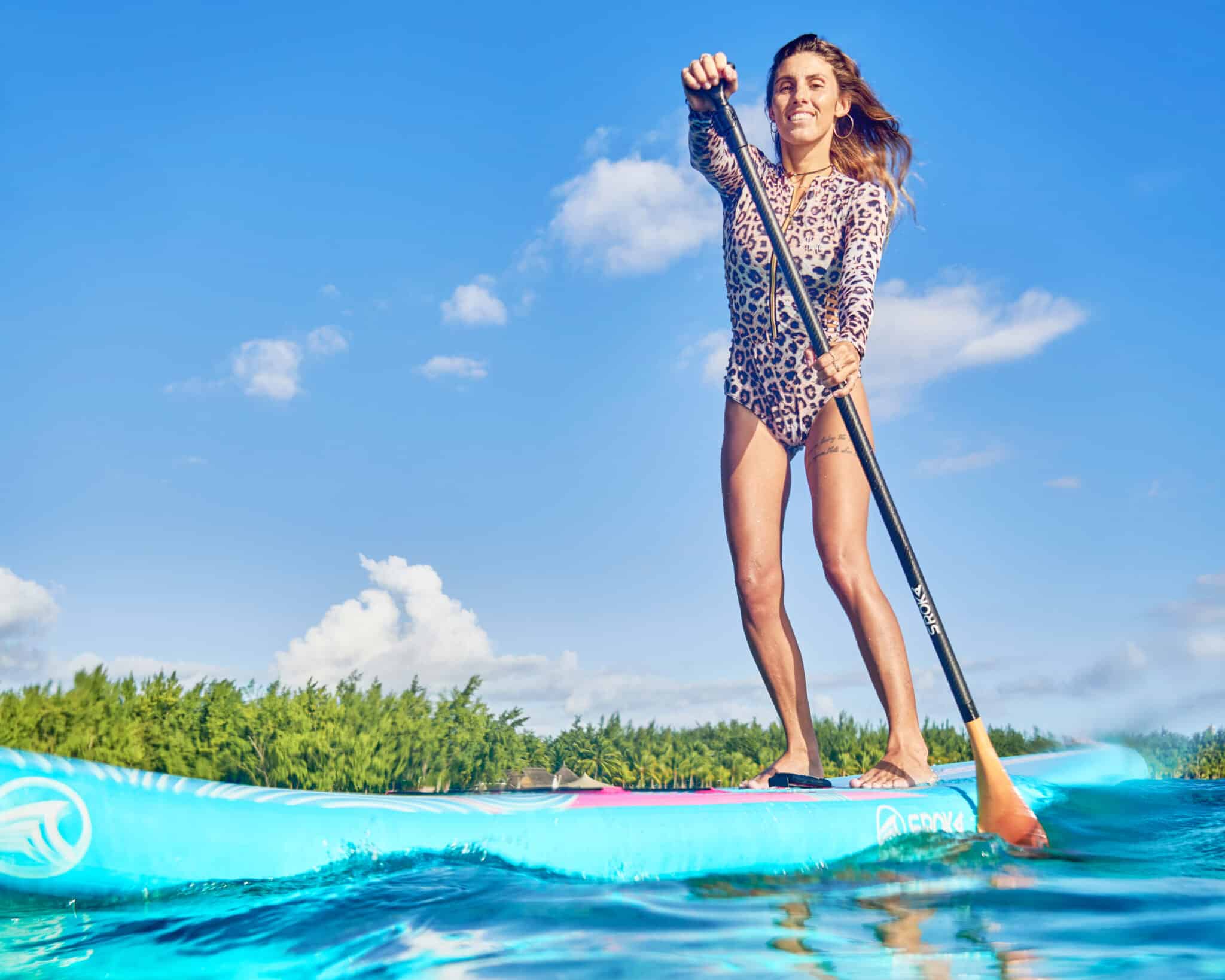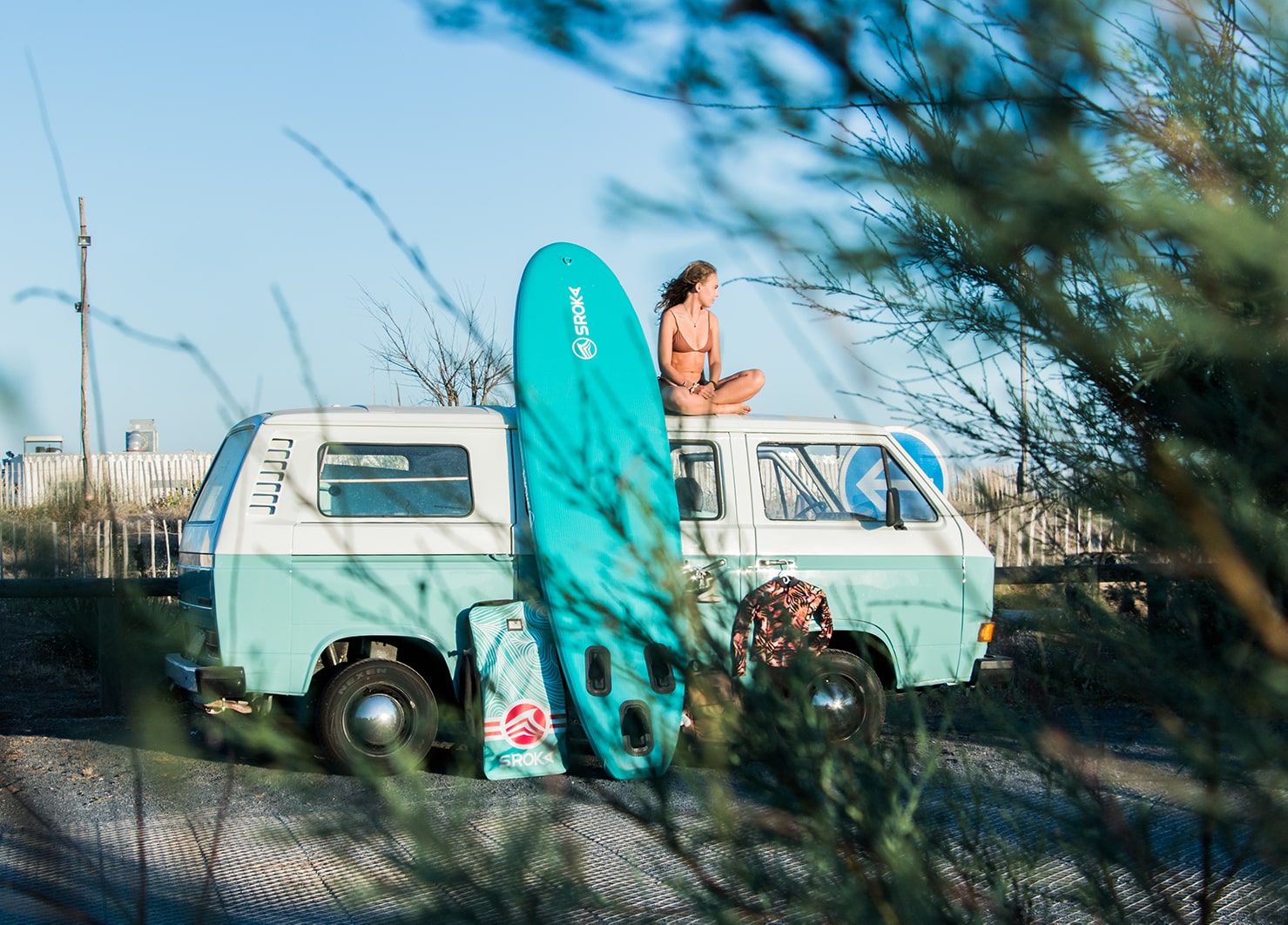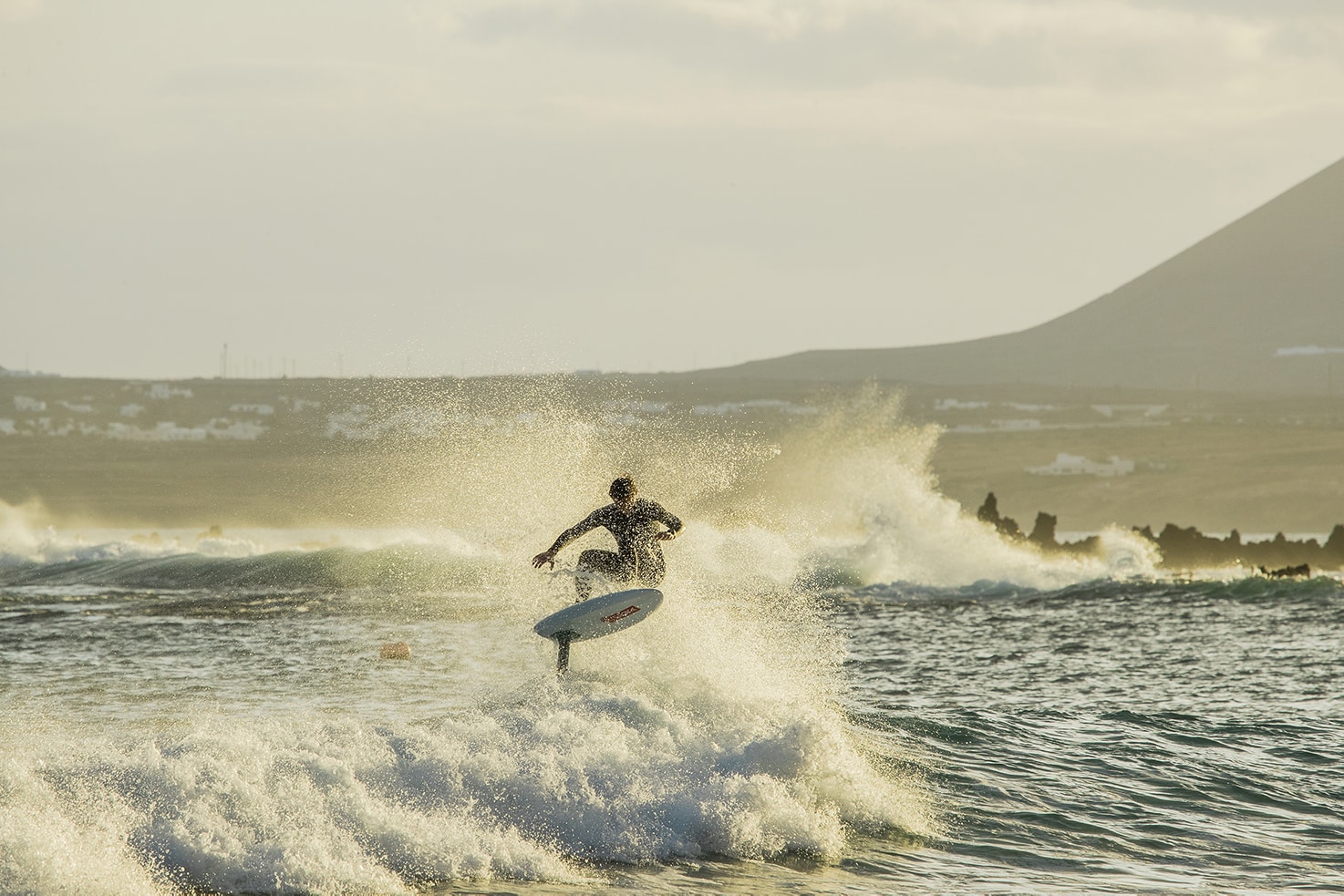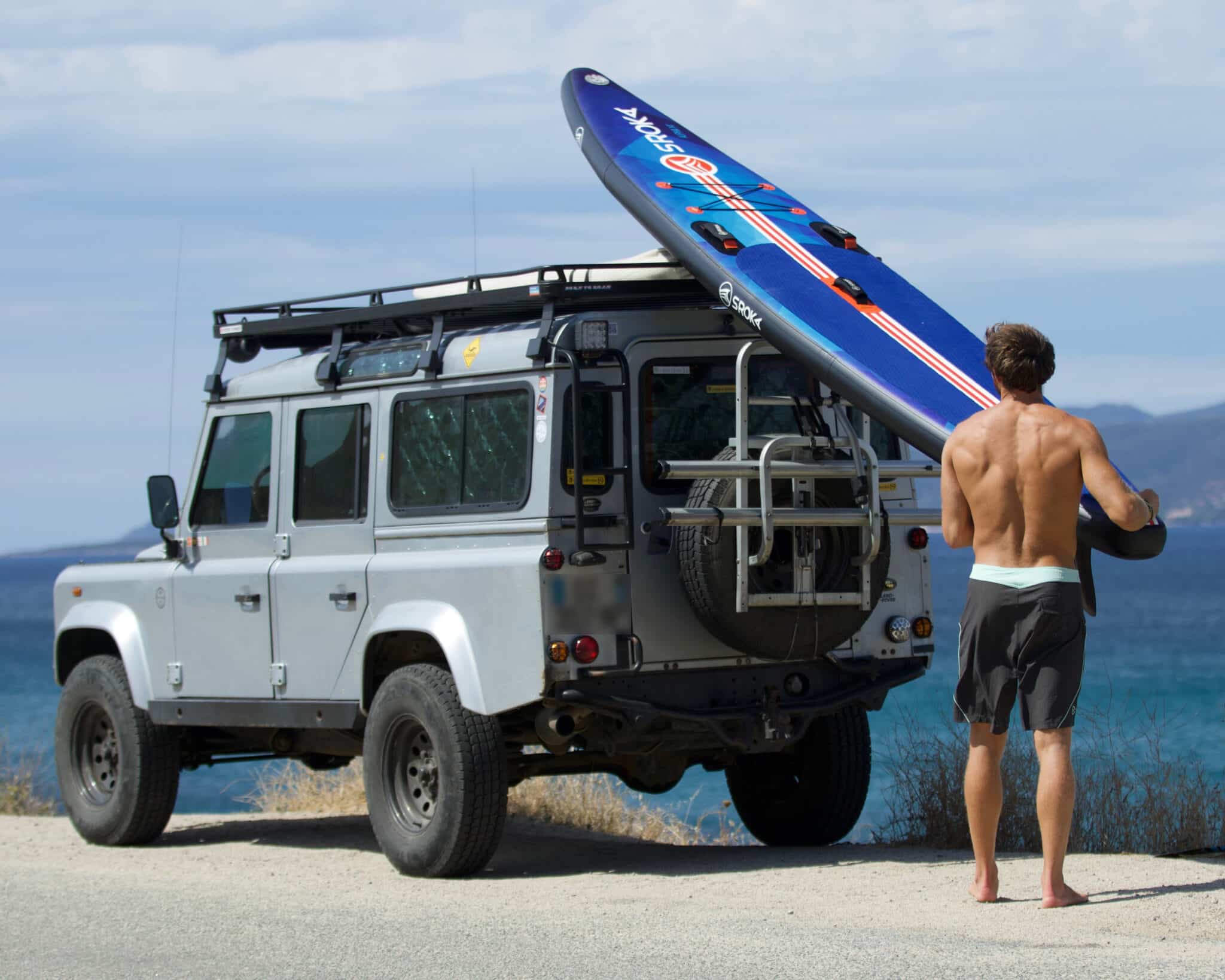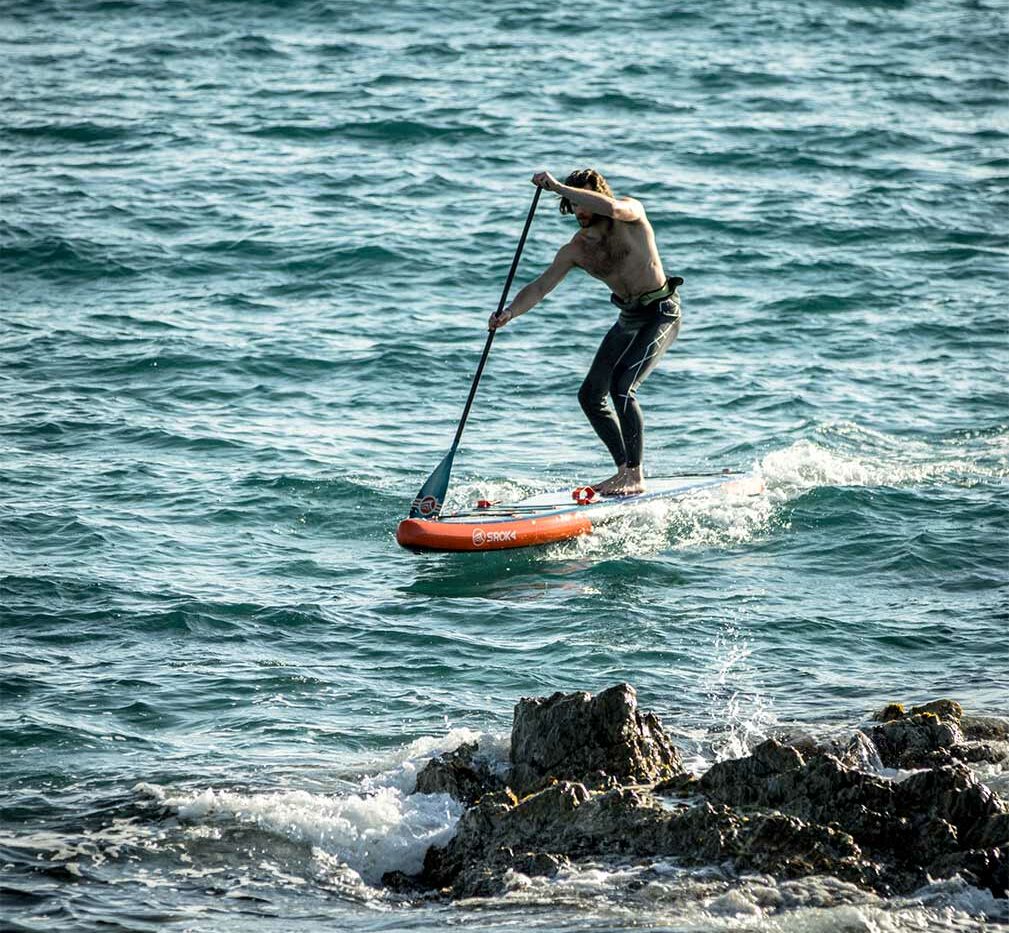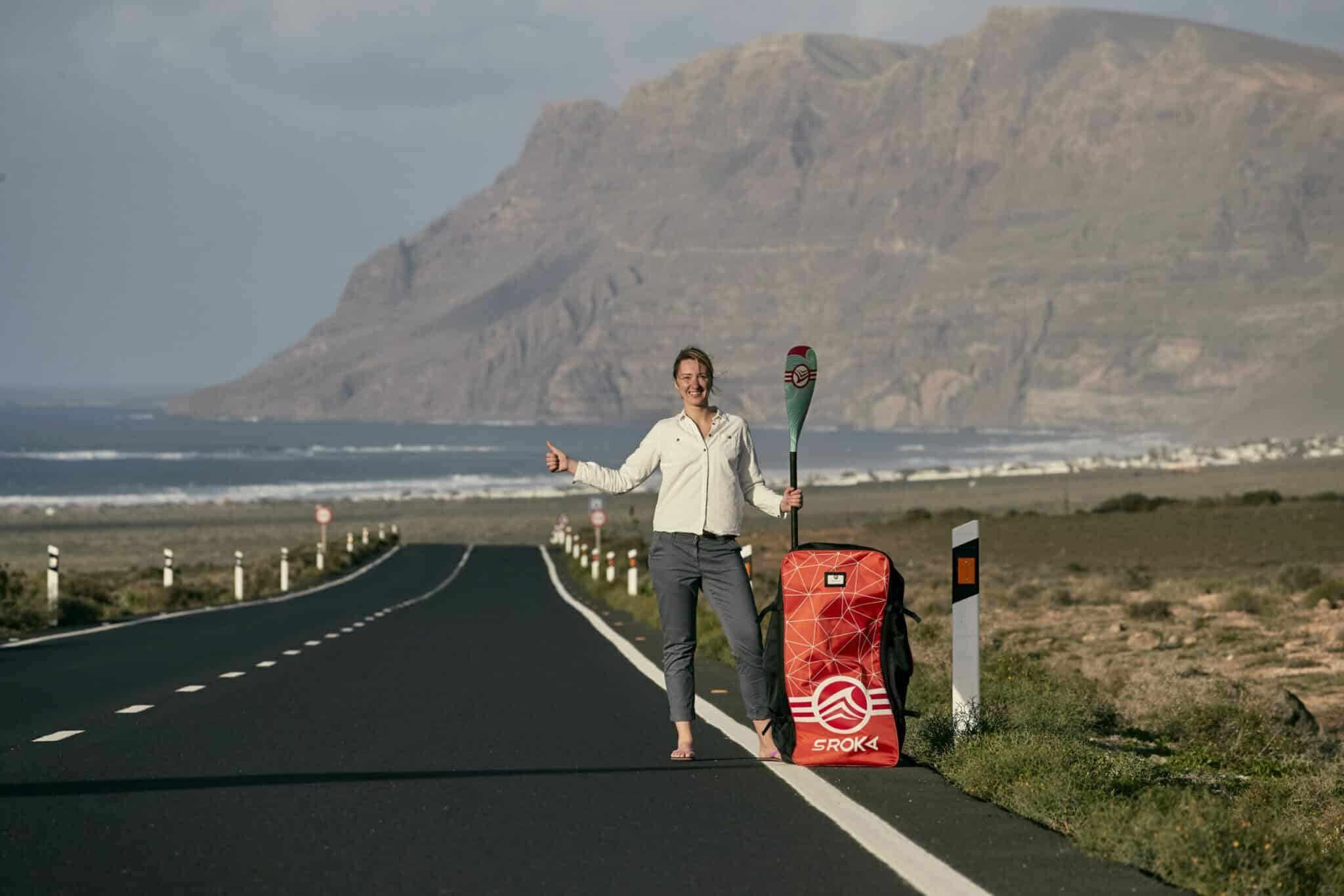 LE MAGAZINE
LE MAGAZINEHow do you ride a wave on a wing foil?

How do you ride a wave on a wing foil?
Do you already know how to wing foil and want to take it to the next level? Do you dream of surfing waves while flying over the water, without your board ever touching the water? Then you’ve come to the right place! In this article, we’ll explain how to ride a wave on a wing foil, giving you tips on choosing the right spot, wing position, trajectory and maneuvers. Whether you’re a beginner or an expert, you’ll find all the information you need to enjoy this exciting sport to the full.
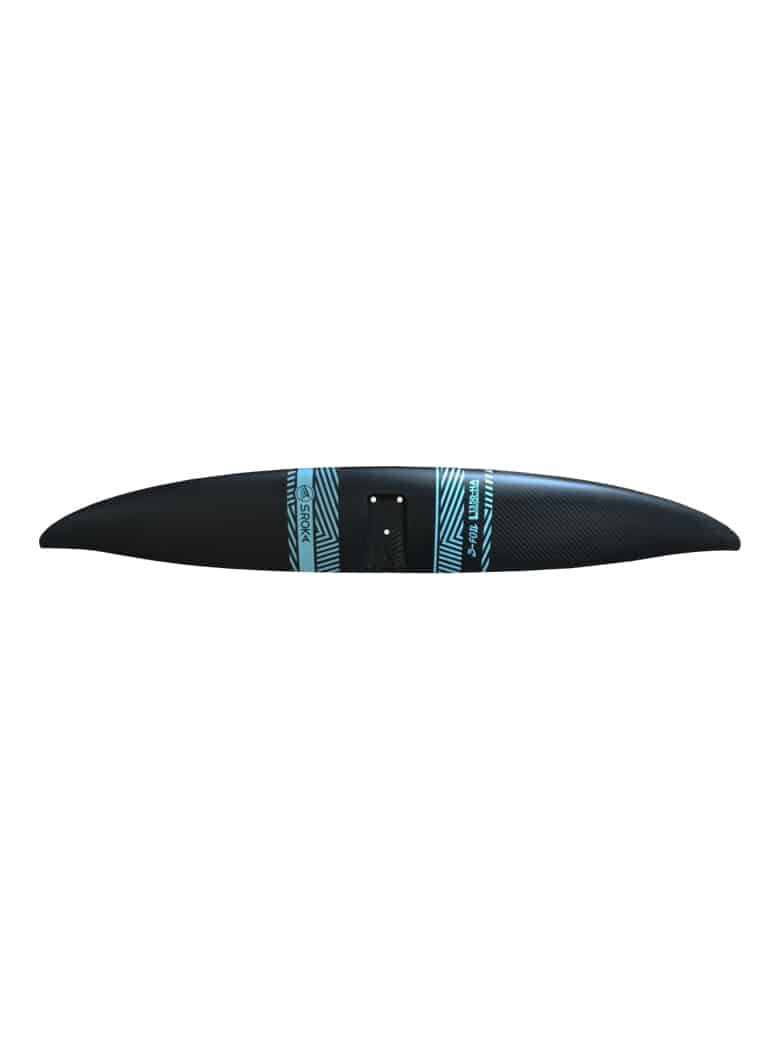
Requirements for surfing a wing wave foil
What’s the right level to start surfing?
- Knowing how to sail properly: you need to master the basic principles of wing foil, controlling speed and direction, changing tack, etc. You also need to know the rules of safety and priority on the water. You also need to know the rules of safety and priority on the water.
- Knowing how to jibe: It’s best to know how to jibe without losing control or touching the water with the board before attempting to surf. Here’s our illustrated step-by-step guide to wingfoil jibing.
If you have these skills, you’re ready to ride a wave on wing foil! If not, we advise you to practice on a flat, calm stretch of water before venturing into the waves.
“With a foil like the 1350 Lift, you can surf to infinity on the slightest ripple over 20cm. It’s the best way to turn a crappy spot into a dream spot!”
Choosing the right spot for the wing foil
- Wind direction and strength: prefer a side-shore wind (parallel to the beach) or a side-on-shore wind (slightly towards the beach), which makes it easy to sail and return to the shore in the event of a problem. Offshore winds should be avoided, as they make it difficult and dangerous to return. The wind must be strong enough to inflate the wing and get the foil off the ground, but not too strong to keep you off balance. Generally speaking, we recommend a wind strength of between 10 and 25 knots.
- Wave size and shape: choose waves suited to your level and equipment. For beginners, it’s best to opt for small, soft, regular waves, which allow you to familiarize yourself with the glide and take-off. To progress, you can move on to deeper, faster waves, which offer more sensations and maneuvering possibilities. Avoid waves that are too big or too breaking, which can be dangerous. It’s also easy to start out in the surf and make your first surfs.
- Available space: make sure you have enough room to navigate without getting in the way or being in the way of other riders. Priority rules must be respected.

How do you ride a wave on a wing foil?
- Spot a wave forming and turn around in front of it, or at least sail in the same direction as the wave. You need to be far enough away to have time to prepare and position yourself.
- Adapt your speed to the speed of the wave to get as close to it as possible. The aim is to be on top of the wave, without being too far ahead or too far behind. Use the wing to accelerate or slow down, by pulling or releasing the handles or boom.
- Once you’re on the wave, put your wing in the neutral position by grabbing it by the handle on the leading edge. This gives you more freedom and allows you to really surf. Keep the wing above your head or to one side, depending on the wind.
- Adjust your trajectory to the shape and movement of the wave. Steer the board with your feet and chest, keeping your knees bent and your eyes on the horizon. You can adapt your speed and direction with the wing, moving it lightly and flexibly.
- If you’re going faster than the wave, you have to go at an angle to the wave, so as not to overtake or lose it. If you’re going slower than the wave, stay perpendicular to it, so you don’t get caught or fall.
What equipment do you need for wingfoil surfing?
The“Classic” range
Classic foils have a medium aspect ratio. They are easy to handle and offer good stability and maneuverability. They are ideal for beginners or riders looking to have fun in the waves or make transitions. They are available in a range of sizes, from 1250 cm2 to 2000 cm. The 1250 is designed for experienced riders or very light beginners (-50 kg).
The“High aspect” range
High aspect foils have a high aspect ratio, i.e. a larger span in relation to the chord. They are more effective in surfing, as they glide longer. They are also better suited to light winds or soft waves. They are available in a range of sizes, from 950 cm2 to 2000 cm2.
| Front wing | Surfing behavior |
| HA 1350 | Glides endlessly over the slightest ripple. Perfect for chop, small swells and waves under 50 cm. Ultra-efficient pumping. It’s the ultimate kite for wing surfing and foil surfing fun in small conditions. 100% compatible with foil surfboards. |
| HA 1190 Lift | Glides for a long time and carries a lot. Perfect for chop, small swells and waves under 70cm. Very efficient pumping. 100% compatible with foil surfboards. |
| HA 1190 Speed | Glides very long, takes more speed than the 1190 Lift, but needs a few centimetres more wave to glide as well, due to its faster, less buoyant Speed profile. Perfect for small and medium swells and waves under one meter. Great for pumping when you’ve got a bit of speed. It’ll be harder to relaunch when pumping if it loses speed, compared with the Lift version, which can be easily relaunched at low revs. 100% surf compatible foil. |
| HA 950 | Perfect for effortless gliding in swells over 50cm. You get a lot of speed with a lot of control. |
| Classique 2000 | Very powerful, this kite offers the most lift. A big kite will be able to make its first surfs in waves or swells between 20 and 60 cm. |
| Classic 1750 | It’s the perfect fin for beginners at Wing. It allows medium-sized riders to learn to wingfoil in the best conditions, and to surf with ease. |
| Classic 1500 | It’s the perfect fin for small riders (-60kg) to start Wing. It allows lightweights to learn wingfoil in the best conditions and to surf for the first time with ease. 100% compatible with foil surfboards for larger riders. |
| Classic 1250 | It’s the perfect kite for carving and making the most of waves from 30 to 80cm for a medium-sized rider (80kg). 100% surf compatible foil. |
 Le Magazine
Le Magazine



